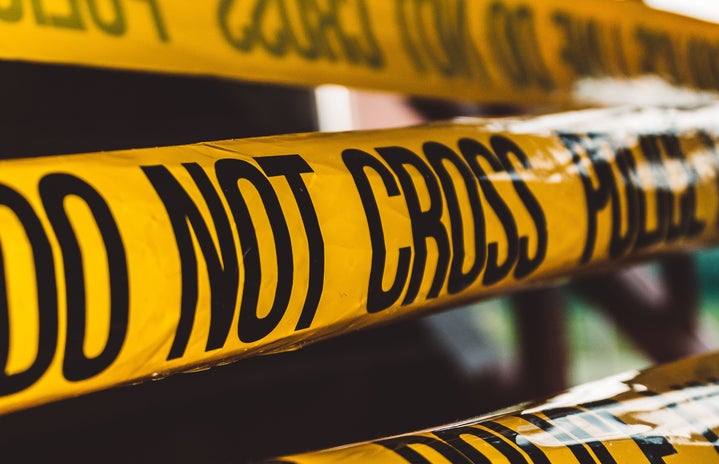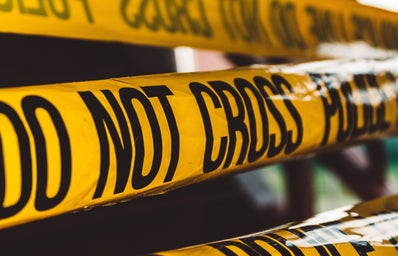On September 11, Gabby Petito was reported missing after a long road trip with her fiance, Brian Laundrie. Petito documented her entire trip on her Instagram and Youtube vlogs, making herself and her cross-country adventure publicly visible, seeming like the perfect getaway between an all-American couple. This online persona depicted her as a lovable character and the public immediately connected to her when she vanished. The world seemed to have their eyes all turned towards the Petito family and ongoing search for Mr. Laundrie, the main person of interest in the case. The public had once again turned this tragedy into 24 hour news entertainment. Her remains were found in Grand Teton National Park in Wyoming on September 21st due to the amount of pressure to find her from not only law enforcement but also the true crime followers and the news. While every person across the nation mourned the loss of Ms. Petito, the families of missing women of color wondered when their justice would come while their cases remained unsolved and untouched by the media. The Petito case has emphasized the idea of “missing white woman syndrome,” where the world waits on baited breath on stories of young and white women while women of color and indigenous women are ignored by the newsroom. For instance, in Wyoming, where Petito’s remains were found with help from large recovery groups and news coverage, only 18% of missing indigenous women of the same state received any type of media coverage.
The growing epidemic of missing women has always been a problem. In 2020, the largest number of missing people were females under the age of 21. However, the sad trend in reporting is that media attention focuses on a specific type of victims such as Petito: young, likable, and most importantly, white. This attention allows for a greater possibility of finding these women, while leaving missing reports of young women of color in the background and unable to receive the same help as those covered more. This is believed to be due to law enforcement bias of what police choose to pursue, which could be racially charged. This could also be a reflection of the modern newsroom – lacking diversity, and in turn, connections to stories of women of color. Whatever the cause, it negatively impacts these communities and leads to more crime rates towards already marginalized groups.
Black women are one of the most impacted groups in missing reports. Just last year 100,000 black women went missing. Out of all the women that went missing last year, 34% were African American. However, only 15% of the US female population is African American, proving a disproportionate rate of missing women of a certain racial background. The rate of reporting these missing women is also considered disproportionate. African American girls are also targeted in homicide cases. Approximately four black women are murdered per day in the US. Even though these numbers are staggering, the media does not reflect this number. The publication Our Black Girls is working to flatten this curve of media ignorance on missing black women. These journalists find and tell stories of these females so they are not forgotten and could possibly change the future for prosperity of these black women. African Americans join a long line of marginalized groups that have faced an extensive history of injustice in the investigative unit.
Beginning with the colonization and whitewashing of the Native Americans, indigenous people have been forcefully marginalized in the US. Still left with financial and social distress from the Trail of Tears era, indigenous people seem to still be ignored by the social work community, especially when it comes to missing persons. Every single day, a person vanishes from a tribal community. In the past year, 700 indigenous people have been reported missing. Twenty percent of these cases are left unsolved within the month. This is double the rate of unsolved cases in white missing persons. Even when an indigenous victim is covered in the media, it has been proved by the Wyoming Report that the victim is more likely to be subject to violent language in the coverage and to be portrayed in a negative way rather than as a true victim. The generational trauma of the community affects the way that missing people cases are dealt with, with less reporting occurring and more anxiety due to the high crime rate against Native people. Indigenous people have persevered in light of ancestral hatred and generations of willful ignorance from the people in power dictating their lifestyle, yet are still unable to reach justice with simple human rights such as finding their lost family members.
On June 28th, Lauren Cho was reported missing when she walked out of the house she was sharing with a group of friends in Yucca Valley. Her remains were then found on October 11th in Southern California, 105 days later. In comparison, Petito’s remains were found in 10 days. Lauren Cho was a woman of color and was not covered heavily in the media until it was too late. Her coverage has focused on comparing her disappearance to that of Petito’s. Many believe that this news coverage and law enforcement bias could have worked in Lauren Cho’s favor, and many blame this lack of attention on the “missing white woman syndrome.”
Every single young woman lost to this epidemic is a tragedy. All of us are turning to Petito for hope and somewhere to channel our frustration with the loss of young girls. News coverage needs to become a place where every single person of every single background can go for closure and reassurance that their loved ones will be returned. The amount of unsolved cases for women of color is enough to reflect that media attention needs to be refined for every person to take part in and feel seen in these already tragic situations. News coverage must move farther away from “missing white woman syndrome” to see the light of opportunity that could come from covering more diverse stories and spreading hope to every side of the nation.


